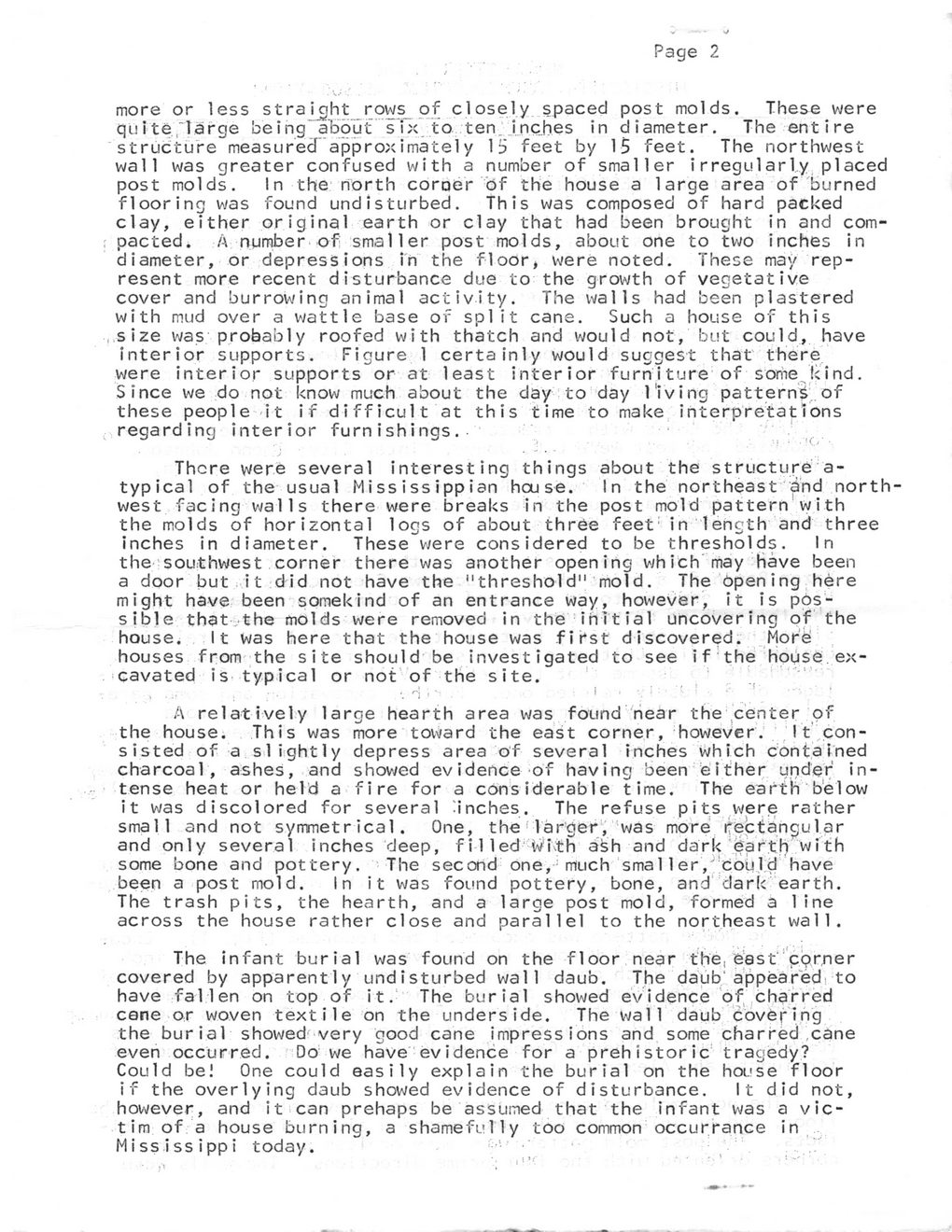This text was obtained via automated optical character recognition.
It has not been edited and may therefore contain several errors.
Page 2 more or less straight rows_of closely spaced post molds. These were quite., Targe being' about six to ten. jnches in diameter. The entire structure measured*approximately 15 feet by 15 feet. The northwest wall was greater confused with a number of smaller irregularly, placed post molds. In the north coroer of the house a large area of burned flooring was found undisturbed. This was composed of hard packed clay, either original earth or clay that had been brought in and compacted. A number of; smaller post molds, about one to two inches in diameter, or depressions in the floor, were noted. These may represent more recent disturbance due to the growth of vegetative cover and burrowing animal activity. The walls had been plastered with mud over a wattle base of split cane. Such a house of this ,.size was probably roofed with thatch and would not, but could, have interior supports. Figure 1 certainly would suggest that there were interior supports or at least interior furniture of some kind. Since we do not know much about the day to day l'iving patterni.of these people it if difficult at this time to make interpretations regarding interior furnishings. There were several interesting things about the structure a-typical of the usual Mi ss iss ipp ian house. In the northeast cind north west facing walls there were breaks in the post mold pattern with the molds of horizontal logs of about three feet: in length and three inches in diameter. These were considered to be thresholds. In the southwest corner there was another opening which may have been a door but it did not have the "threshold" mold. The Opening here might have been somekind of an entrance way, however, it is possible that the molds were removed in the initial uncovering of the house. It was here that the house was first discovered. More! houses from the site should be investigated to see if the house excavated is typical or not of the site. /< I > i A relatively large hearth area was found near the center of the house. This was more toward the east corner, however. It,consisted of a slightly depress area of several inches which contained charcoal, ashes, and showed evidence of having been either under intense heat or held a fire for a considerable time. The earth below it was discolored for several inches. The refuse pits were rather small and not symmetrical. One, the'larger*, was more rectangular and only several inches deep, filled Wivth afeh and dark earth with some bone and pottery. The second one, much sma 11 er, cou.ld have been a post mold. In it was found pottery, bone, and? dark earth. The trash pits, the hearth, and a large post mold, formed a line across the house rather close and parallel to the northeast wall. The infant burial was found on the floor near the,east'cprner covered by apparently undisturbed wall daub. The daub'appearedrto have fal len on top of it. The burial showed evidence of .charred cane or woven textile on the underside. The wall daub covering the burial showed' very good cane impressions and some charred cane even occurred. Do we have evidence for a prehistoric tragedy? Could be! One could easily explain the burial on the house floor if the overlying daub showed evidence of disturbance. It did not, however, and it can prehaps be assumed that the infant was a victim of a house burning, a shamefully too common occurranee in Mississippi today.

Walden 006